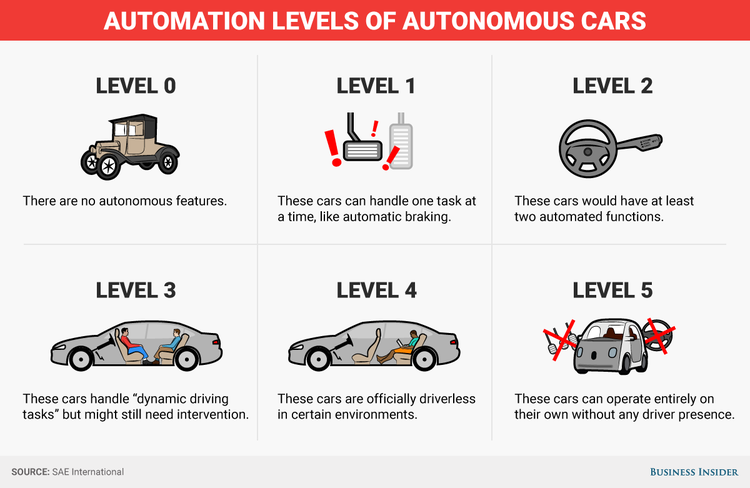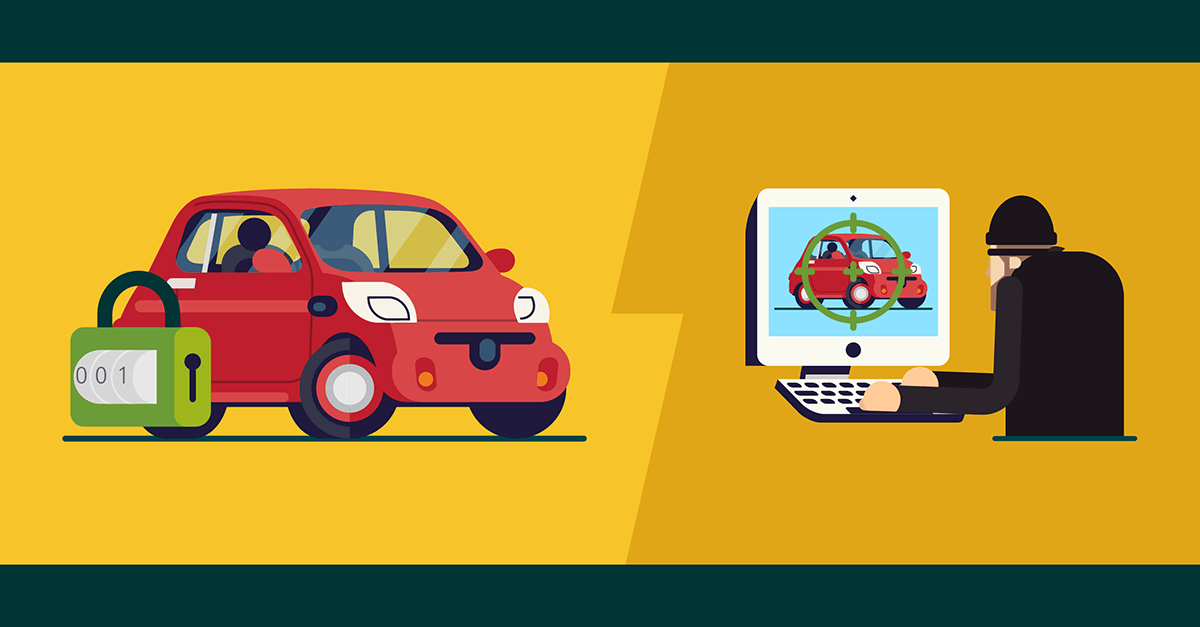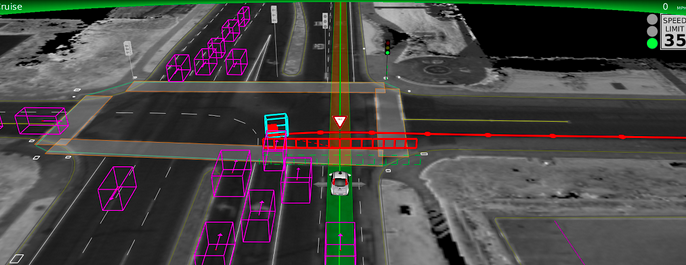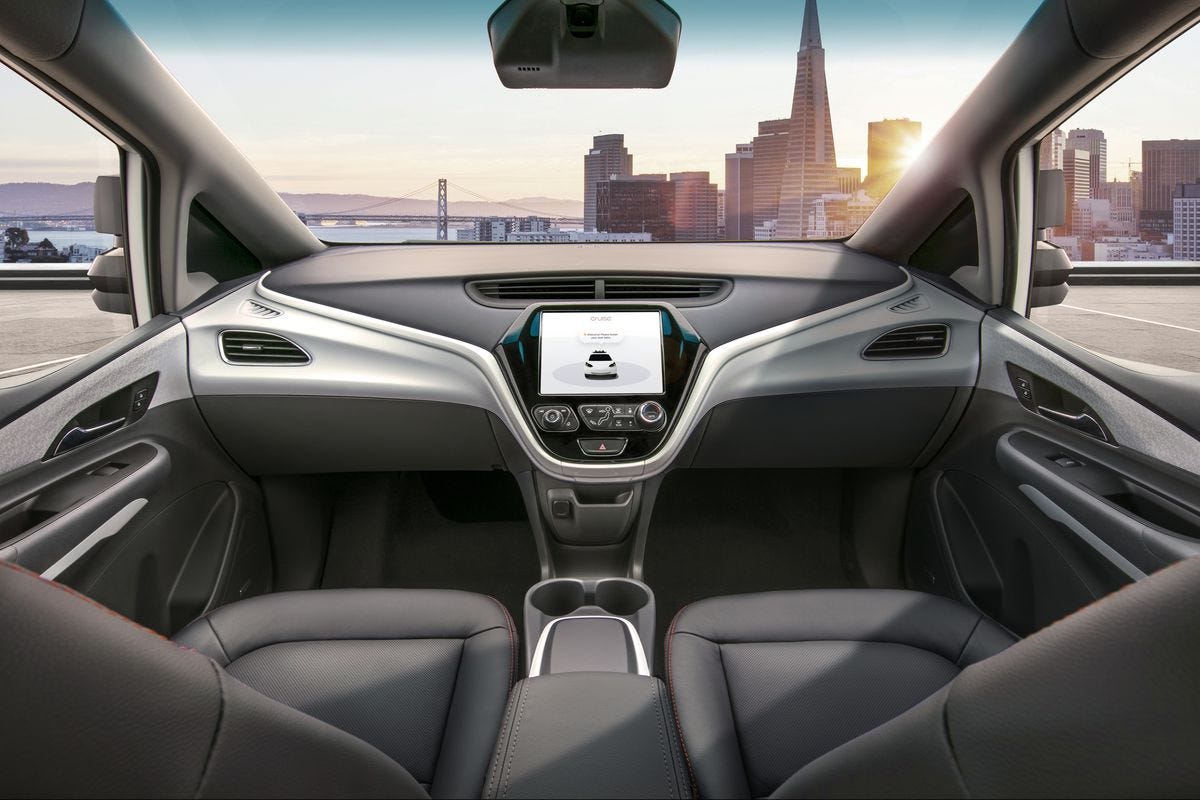Contents
Future of Cyber Security for Connected and Autonomous Vehicles
An introduction to the different security challenges faced by autonomous vehicles and a Machine Learning approach to tackle them.
Introduction
Autonomous vehicles make use of sensors and complex algorithms to detect and respond to their surroundings. Some examples of common technologies employed in autonomous vehicles are: Computer Vision, LIDAR, GPS, etc…
Thanks to these technologies, autonomous vehicles don’t necessitate a driver to complete even complex journeys. Additionally, multiple autonomous vehicles can communicate with each other to improve traffic and obstacle avoidance.
The evolution in automation levels of cars is summarised in Figure 1. Many companies such as Waymo and Tesla are now hugely investing in a future lead by Autonomous vehicles (self-driving cars).

Figure 1: Automation Levels of Autonomous cars [1]
“DoT researchers estimate that fully autonomous vehicles, also known as self-driving cars, could reduce traffic fatalities by up to 94% by eliminating these accidents that are due to human errors”
— ZDNet, Teena Maddox [2]
Cyber Security
A research carried out by Charlie Miller and Chris Volosek recently showed that a Jeep Cherokee can be hacked just through an internet connection (making the car stop on a highway!). Also, other types of vehicles have been demonstrated to be sensitive to either wired or wireless attacks (eg. Toyota Prius, Ford Escape). In these cases Hackers have been able to: activate/disable vehicles brakes, steering wheels and increase the vehicle speed.

Figure 2: Cybersecurity in Autonomous Vehicles [3]
Hackers can try to take advantage of self-driving cars vulnerabilities in many possible ways [4]:
- Cloud Computing: self-driving cars produce and store new data every second and make use of cloud computing for fast storage/retrieval (eg. identify GPS position to predict traffic flow). If a Hacker was able to access the cloud database of a car, it would be able to manipulate many features of a car (eg. switch off safety devices). Additionally, because the transfer of information must be as fast as possible, it is difficult to highly encrypt the information sent.
- Multiple Coding Languages: nowadays cars are created by assembling many components fabricated by different manufacturers. In order to ensure a car is perfectly functioning, all the different parts need to perfectly communicate with each other. If secure communication cannot be ensured, Hackers might try to take advantage of this. Car manufacturers usually perform penetration testing to make sure of their vehicles’ security.
There are two main risks associated with hacking self-driving cars:
- The Hacker might be able to take control of the car remotely.
- The Hacker might be able to access the users’ personal information.
Countries like the USA and UK already enforced legislation in order to ensure car manufacturers maintains a minimum required cybersecurity standard.
Ensuring high security in autonomous vehicles can also increase trust in the public to invest in this new technology.
If you are interested in finding out more about cybersecurity in autonomous vehicles, this research paper is a great place where to start.
Machine Learning
As mentioned before, vehicles always produce and store large amounts of data, it then comes to us to decide how to make the most out of this data.
Machine Learning can potentially be used to identify and prevent unusual behaviour (eg. make the car go in parking mode while driving at high speed on a highway) [5]. In this way, Hacker attacks could be stopped from happening.
Researchers are still now taking place in order to increase prediction accuracy. In fact, in order to create models able to distinguish between usual and unusual driving behaviours, many factors relating the car and it’s surroundings have to be taken into account.
Additionally, it could be possible to add a feature to make the driver allow for “unusual” behaviours if considered as necessary depending on his judgment.

Figure 3: Machine Learning in self-driving cars [6]
Legal Implications
As Autonomous Vehicles are now becoming more popular, institutions are now getting concerned if it is necessary to create new laws to regulate their use.
For example, in 2018 in Arizona (USA) the first case of an autonomous car killing a pedestrian has been registered. According to the police report, the pedestrian might have been at fault. In this case, who should be considered to be at fault?
- Is it the driver in the car? (who didn’t have control of the vehicle at the moment of the accident).
- Is it the software developer? (who created the software designed to handle these type of situations).
- Is it the car manufacturer? (who didn’t take enough precautions when designing and supplying the vehicle).
- Who should be in charge of the car insurance? (since the driver does not take control of the vehicle in most of the situations).
- In case of inevitable collision, should the car prioritize its own safety or the one of the other vehicle/pedestrians involved?
Most of these questions are still without an answer and different approaches might be taken to solve them (depending on the regulatory country and cultural relativism).
Bibliography
[1] This is what the evolution of self-driving cars looks like. Business Insider. Accessed at: https://www.businessinsider.com/what-are-the-different-levels-of-driverless-cars-2016-10?r=US&IR=T
[2] How autonomous vehicles could save over 350K lives in the US and millions worldwide. ZDNet, Teena Maddox. Accessed at: https://www.zdnet.com/article/how-autonomous-vehicles-could-save-over-350k-lives-in-the-us-and-millions-worldwide/
[3] Public Opinion on Self-Driving Cars, Penn State. Accessed at: https://sites.psu.edu/mihiryouthere/2017/03/03/public-opinion-on-self-driving-cars/
[4] Self-Driving Cars: How Automakers can Overcome Cybersecurity Issues. Jemima Meyers, tripwire. Accessed at: https://www.tripwire.com/state-of-security/featured/self-driving-cars-cybersecurity-issues/
[5] How Machine Learning Can Enhance Cybersecurity for Autonomous Cars. DINO CAUSEVIC, toptal. Accessed at: https://www.toptal.com/insights/innovation/how-machine-learning-can-enhance-cybersecurity-for-autonomous-cars
[6] Safety Testing Self Driving Cars need to consider the possible Deep Learning Weaknesses, nextbigfuture. Accessed at: https://www.nextbigfuture.com/2016/10/safety-testing-self-driving-cars-needs.html
Contacts
If you want to keep updated with my latest articles and projects follow me on Medium and subscribe to my mailing list. These are some of my contacts details:

